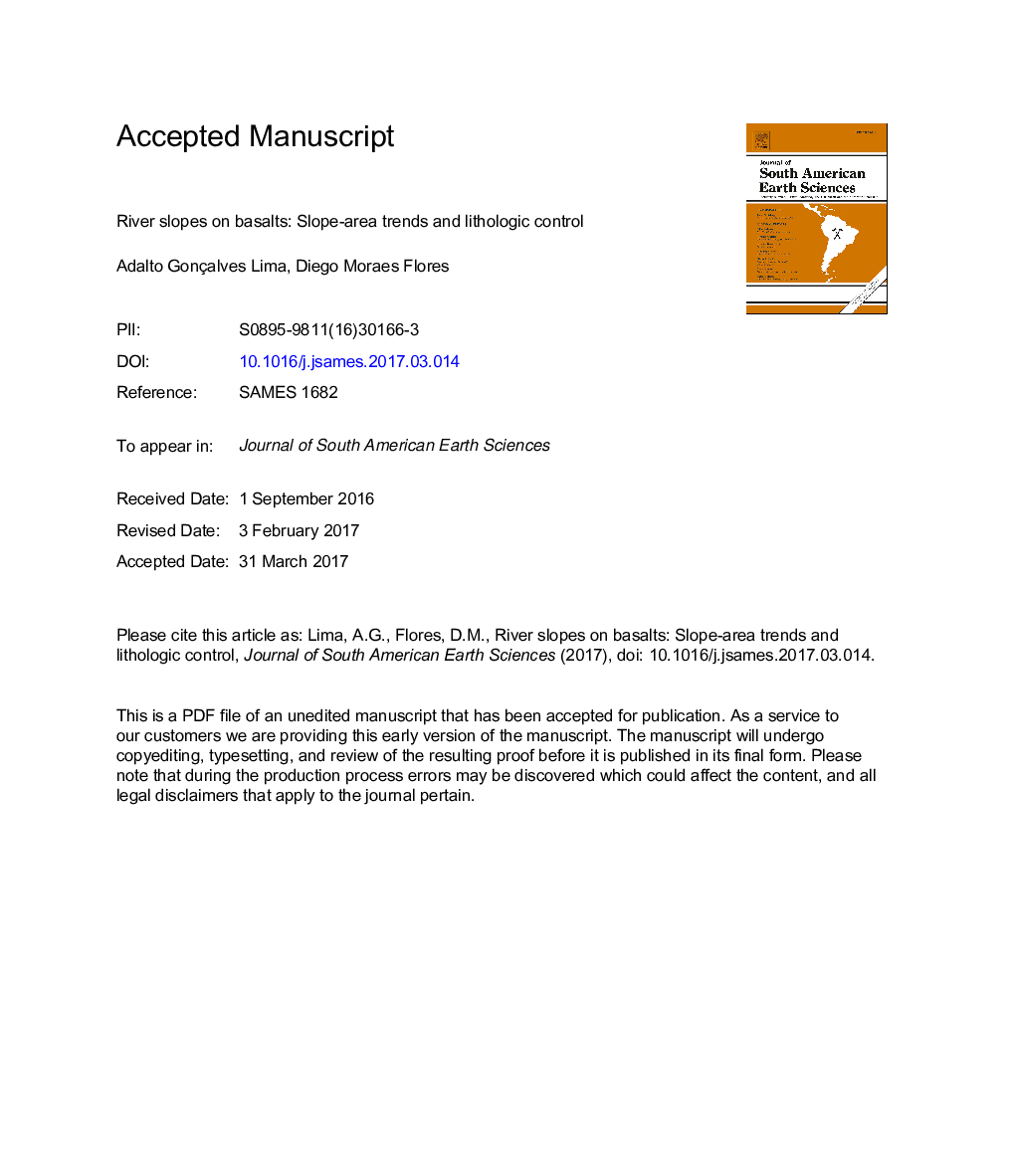| کد مقاله | کد نشریه | سال انتشار | مقاله انگلیسی | نسخه تمام متن |
|---|---|---|---|---|
| 5780480 | 1635134 | 2017 | 47 صفحه PDF | دانلود رایگان |
عنوان انگلیسی مقاله ISI
River slopes on basalts: Slope-area trends and lithologic control
ترجمه فارسی عنوان
دامنه های رودخانه ای در بازالت: روند شیب منطقه و کنترل سنگ شناسی
دانلود مقاله + سفارش ترجمه
دانلود مقاله ISI انگلیسی
رایگان برای ایرانیان
موضوعات مرتبط
مهندسی و علوم پایه
علوم زمین و سیارات
علوم زمین و سیاره ای (عمومی)
چکیده انگلیسی
River incisions in continental basalts are distinct and heterogeneous. Knickpoints and the predominance of erosion by plucking contribute to that distinction, whereas significant differences in the vesicularity and jointing of basaltic flows are suggested as controls on the heterogeneities of incisions. We investigated 11 small river channels (<80 km long) installed on continental basalts of the Paraná Volcanic Province, South Brazil, using slope-area analysis (S = ksAâθ), to explore the possible relationships of steepness (ks) and concavity (θ) indices with characteristics of flow basalts. Channels were chosen that did not present signs of significant tectonic interference on a longitudinal profile, i.e., convex reaches and prominent knickpoints. The data were extracted in a Geographic Information System (GIS) environment from digital topographic maps at a scale of 1:50,000. Basaltic flow zones and morphologies, jointing styles, as well as river bed morphologies and erosion processes were surveyed in the field. The longitudinal profiles of the rivers are stepped, and the lower slope reaches are associated predominantly with vesicular basalts and basaltic breccias. Knickpoints are generated by contrasts in the erodibility of the substrate due to vesicular-massive differences and the partial insertion of channels in tectonically fractured zones (lineaments). The normalized steepness index (ksn) is positively correlated (R2 = 0.8) with the knickzone index (the ratio between the number of knickzones and the channel length). Rivers occurring in simple basaltic flows have distinct upper and lower limits of the steepness index (ks), which are represented by massive and vesicular basalts, respectively. The average concavity index (θ) is 0.56 ± 0.16, and its range is from 0.34 to 0.82. The range in θ is inversely related to the rate of downstream variation in the drainage area (discharge). However, the greatest control is exerted by the proportion of basalts that are more resistant to erosion (massive), with which there is also an inverse relationship (R2 = 0.64). The results indicate that, although basalts have an apparent uniformity in the geomorphological response, differences in jointing and vesicularity may generate different behaviors detectable by slope-area indices.
ناشر
Database: Elsevier - ScienceDirect (ساینس دایرکت)
Journal: Journal of South American Earth Sciences - Volume 76, July 2017, Pages 375-388
Journal: Journal of South American Earth Sciences - Volume 76, July 2017, Pages 375-388
نویسندگان
Adalto Gonçalves Lima, Diego Moraes Flores,
